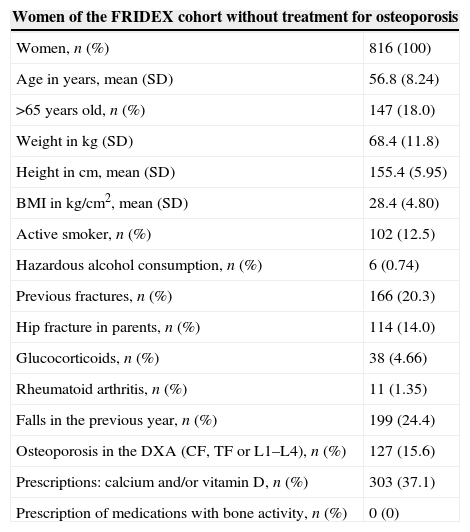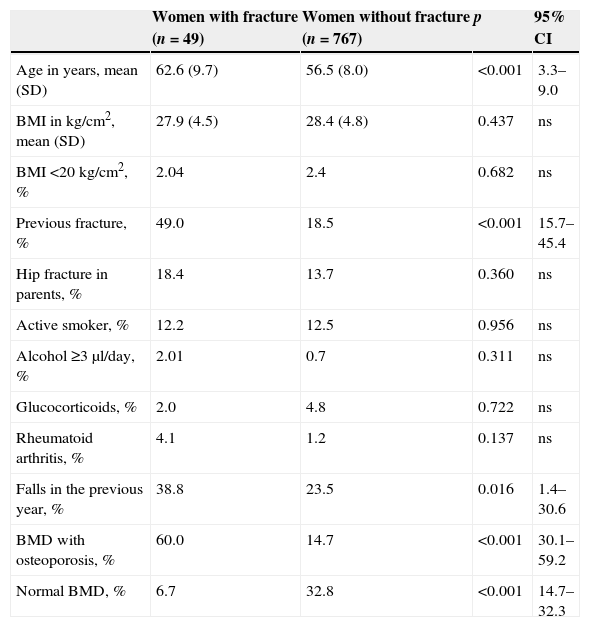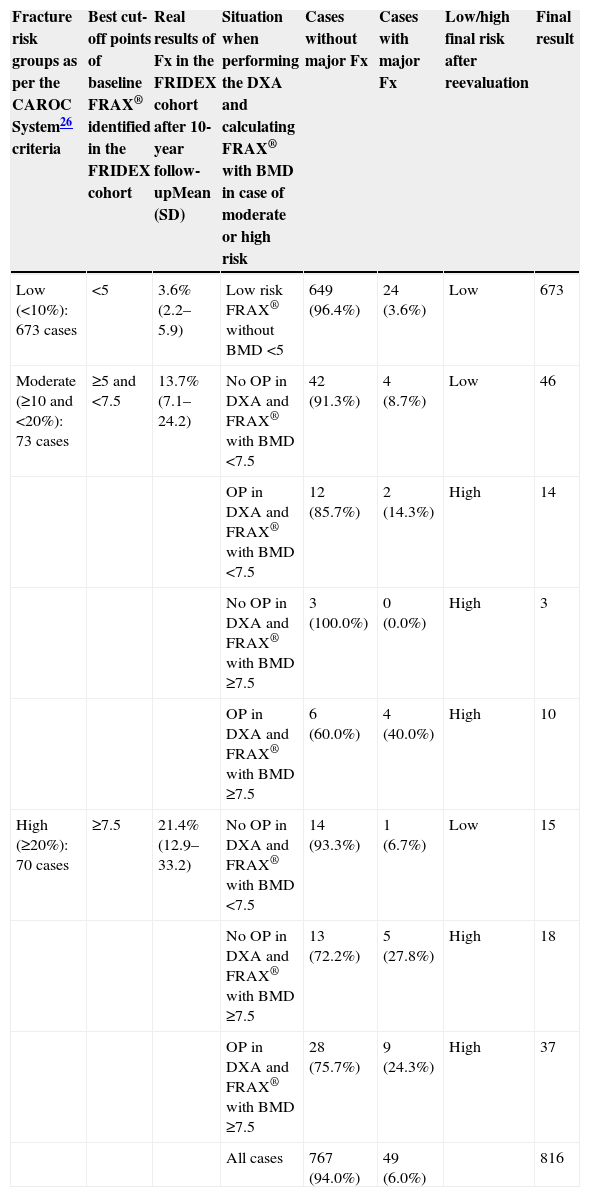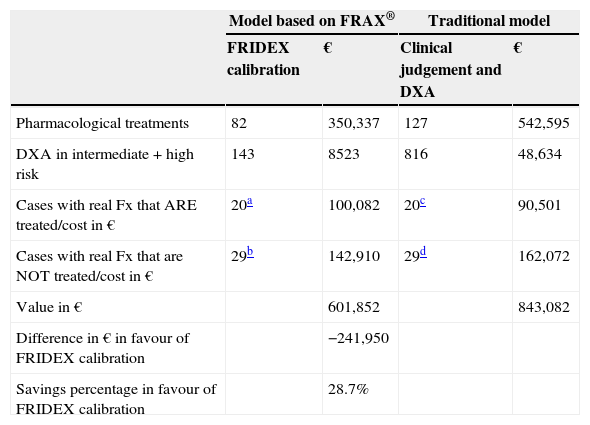To detect FRAX® threshold levels that identify groups of the population that are at high/low risk of osteoporotic fracture in the Spanish female population using a cost-effective assessment.
Patients and methodsThis is a cohort study. Eight hundred and sixteen women 40–90 years old selected from the FRIDEX cohort with densitometry and risk factors for fracture at baseline who received no treatment for osteoporosis during the 10 year follow-up period and were stratified into 3 groups/levels of fracture risk (low <10%, 10–20% intermediate and high >20%) according to the real fracture incidence.
ResultsThe thresholds of FRAX® baseline for major osteoporotic fracture were: low risk <5; intermediate ≥5 to <7.5 and high ≥7.5. The incidence of fracture with these values was: low risk (3.6%; 95% CI 2.2–5.9), intermediate risk (13.7%; 95% CI 7.1–24.2) and high risk (21.4%; 95% CI 12.9–33.2). The most cost-effective option was to refer to dual energy X-ray absorptiometry (DXA-scan) for FRAX®≥5 (Intermediate and high risk) to reclassify by FRAX® with DXA-scan at high/low risk. These thresholds select 17.5% of women for DXA-scan and 10% for treatment. With these thresholds of FRAX®, compared with the strategy of opportunistic case finding isolated risk factors, would improve the predictive parameters and reduce 82.5% the DXA-scan, 35.4% osteoporosis prescriptions and 28.7% cost to detect the same number of women who suffer fractures.
ConclusionsThe use of FRAX® thresholds identified as high/low risk of osteoporotic fracture in this calibration (FRIDEX model) improve predictive parameters in Spanish women and in a more cost-effective than the traditional model based on the T-score≤−2.5 of DXA scan.
Detectar los umbrales de la herramienta FRAX® que determinen los grupos de riesgo alto/bajo de fractura osteoporótica en la población femenina española y su valoración coste-efectiva.
Pacientes y métodosEstudio de cohortes. Ochocientas dieciséis mujeres de 40-90 años de la cohorte FRIDEX con densitometría basal, factores de riesgo de fractura y sin tratamiento para la osteoporosis en los 10 años de seguimiento. Se estratificaron en 3 grupos/niveles de riesgo de fractura principal (bajo<10%, intermedio 10-20% y alto>20%) según la incidencia real de fractura, y se buscaron los puntos de corte equivalentes de FRAX® basal.
ResultadosLos umbrales de FRAX® basal para fractura principal fueron: riesgo bajo<5; intermedio≥5 y <7,5 y alto≥7,5. La incidencia real de fractura con estos valores fue: riesgo bajo (3,6%; IC 95% 2,2-5,9); intermedio (13,7%; IC 95%7,1-24,2), y alto (21,4%; IC 95% 12,9-33,2). La opción más coste-efectiva fue realizar una dual energy X-ray absorptiometry (DXA, «absorciometría dual de rayos X») para FRAX®≥5 (riesgo intermedio y alto) para reclasificar los casos mediante FRAX® con DXA en riesgo alto/bajo. Así se seleccionarían 17,5% de las mujeres para DXA y 10% para tratamiento. Con estos umbrales calibrados de FRAX®, comparados con la estrategia tradicional basada en la DXA, se mejoran los parámetros predictivos y se reducen las DXA (82,5%), los tratamientos (35,4%) y el coste global (28,7%) para detectar al mismo número de mujeres que tuvieron fracturas.
ConclusionesLa utilización de los umbrales de FRAX® identificados como alto/bajo riesgo de fractura osteoporótica en la presente calibración (modelo FRIDEX) mejorarían los parámetros predictivos en mujeres españolas y de una forma más coste-efectiva que el modelo tradicional basado en el T-score ≤ -2,5 de la DXA.
Artículo
Comprando el artículo el PDF del mismo podrá ser descargado
Precio 19,34 €
Comprar ahora












